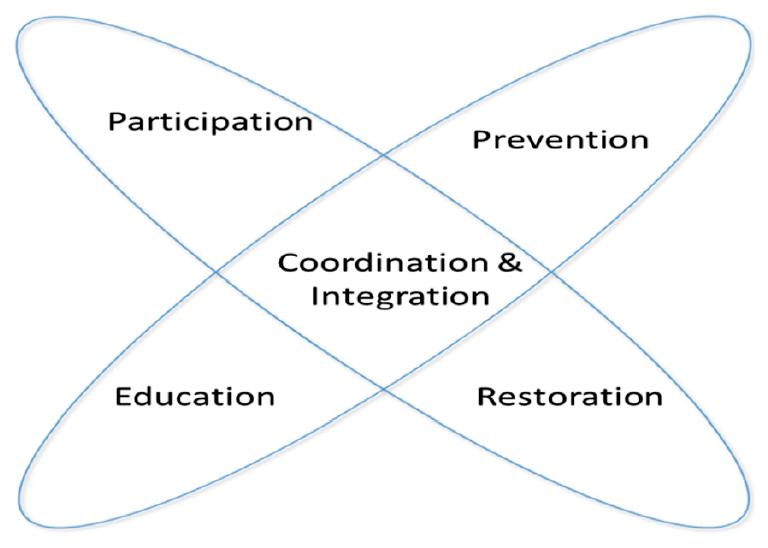Media Releases
Preventing vandalism in tourism: A multi-dimensional approach
Media Releases

A new study examines vandalism prevention in tourism and proposes a framework for reducing tourism-linked vandalism.
Vandalism committed by tourists is not an infrequent occurrence. Acts of vandalism can vary between being a nuisance to being significantly destructive and disruptive — especially when the victims of vandalism are historic monuments and landmarks. Such vandalism is often carried out by tourists who do not respect or understand the historic area that they are visiting.
“The destructive behaviours of tourists, whether intentional or not, have negative impacts on the host community, contributing to permanent damage of historic and heritage property, loss of elements that provide object authenticity, loss of tourism value, and other reputational damages and ill effects on the community,” says Professor Abhishek Bhati, Campus Dean and Head of Learning, Teaching and Student Engagement at James Cook University in Singapore.
So, how can we prevent vandalism in tourism?
In his study, examined different approaches to vandalism prevention, in order to determine an effective vandalism control strategy. He maintains that one of the key principles of an effective vandalism control strategy is to incorporate targeted mechanisms directed at different levels — such as the individual visitors, visitor attraction staff, the local community, and the agencies responsible for destination management. This highlights the importance of government policies, stakeholder strategies and site management practices in vandalism prevention and control. In fact, past research suggests that the local community plays an important role — either directly or indirectly, actively or passively — in shaping visitor behaviour.
“The motivating factors behind each form of vandalism need to be addressed with the help of multi-dimensional approaches,” Professor Bhati asserts. “It suggests that increased levels of surveillance, enforcement and more advanced technical measures produce only temporary results. Introduction of stringent and stricter laws and punitive measures fails to produce long-term positive effects at visitor attractions and can be tedious, costly, and time-consuming.”
By integrating a positivist approach to vandalism control (which leverages preventive and punitive strategies) alongside a constructivist approach (which seeks to understand the type and intensity of vandalism and its meaning for vandals, community and broader society), Professor Bhati proposes the Prevention, Restoration, Education, and Participation (PREP) framework as a means of effective vandalism control and sustainable development.

PREP framework
The elements of “Education” and “Participation” in the PREP framework represent the importance of the human factor in vandalism prevention. On the other hand, “Prevention” and “Restoration” signify the importance of attraction management in designing, maintaining and operating physical facilities of attractions.
“Education” involves strategies that increase awareness of vandalism and its effects on sustainability in the tourism sector. Visitors and the local community should be the primary focus of education and enhanced awareness programmes. The objective of these education campaigns is to establish an interest in the issue of vandalism and local ownership of attraction properties, thus, discouraging irregular behaviours. Higher awareness could be achieved by adopting principles of mindfulness to enhance authentic visitor experience and encourage desirable visitor behaviours.
In addition, “Participation” encourages a sense of ownership and engagement within the stakeholders, especially within the local community. Stakeholder participation in decision-making and operation are key factors in achieving more effective intervention strategies and building sustainable attraction management outcomes.
Meanwhile, “Prevention” comprises strategies that seek to prevent acts of vandalism altogether, such as surveillance, access control and fortifying the area. The PREP framework highlights the need to identify and address the motivating factors behind each form of vandalism through a multi-dimensional, which include strategies that influence visitor behaviour, robust design of the physical setting of the attraction, fortification, education and adoption of an inclusive approach that involves primary stakeholders such as the community, site management and local authorities.
Finally, the presence of vandalism creates an environment where vandalism is perceived as normal and, therefore, increases in frequency and prominence. “Restoration” refers to plans and actions to restore vandalised attractions involving the rapid repair and maintenance, in order to maintain the positive image of tourist attractions and mitigate a culture that permits and tolerates vandalism.
As the travel and tourism industry recovers, it is useful to gain a deeper understanding of tourism-linked vandalism and how it can be controlled and prevented, so that we can create a more positive experience for everyone involved.
PAPER
Bhati, A. (2022). Tourism research and tackling vandalism: Shifting the approach. Tourism and Hospitality Research. https://doi.org/10.1177/14673584221100707
Find out more about our Hospitality and Tourism Management courses.
Check out Professor Abhishek Bhati’s staff and research profiles.
Discover further information on areas of research and research strength at James Cook University in Singapore.
Contacts
Professor Abhishek Bhati [email protected]
Media: Mr Edwin Teo [email protected]